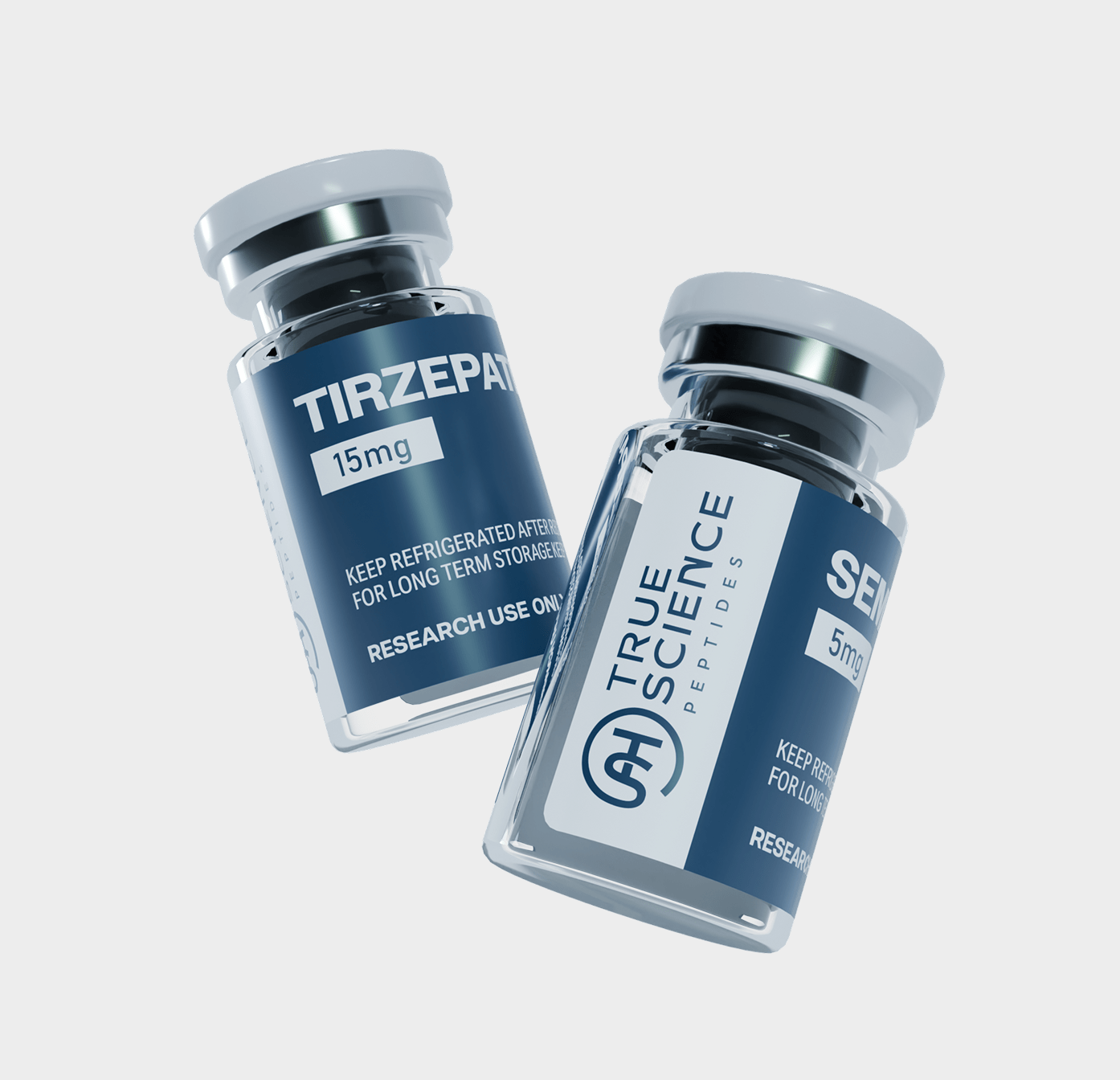Researchers study peptides for their ability to modulate biochemical pathways, influence receptor-specific activity, and model conditions such as hormonal imbalance, tissue degradation, or metabolic dysfunction—all within strictly regulated in vitro and in vivo frameworks.
Overnight Shipping Available
Overnight Shipping Available
Tested for 99% Purity
Tested for 99% Purity
Independently Lab Tested
Independently Lab Tested

Learn More


What Are Peptides?
Peptides are short chains of amino acids—typically ranging from 2 to 50—that act as signaling molecules throughout biological systems. In laboratory research, peptides are studied for their role in cellular communication, gene expression, protein synthesis, and regulatory feedback loops. Their high specificity makes them invaluable tools in fields such as molecular biology, metabolic research, regenerative modeling, and neuroendocrinology.
Why Are Peptides Studied?
High-purity research peptides are used in controlled environments to study the mechanisms behind:
Because peptides naturally occur in the body, they can be used to study targeted biological responses with minimal off-target interference—making them ideal for precision-based research.
Frequently Asked Questions (FAQs)
What are peptides studied for in scientific research?
What’s the difference between peptides and proteins?
Peptides are composed of short amino acid sequences (typically under 50 residues), while proteins are longer chains that fold into functional structures. Peptides often serve regulatory or messenger roles; proteins are commonly enzymatic, structural, or hormonal in function.
What are the main types of peptides?
- Oligopeptides : Chains of 2–20 amino acids
- Polypeptides : 20–50 amino acids
- Proteins : 50+ amino acids, folded
What is peptide stacking?
Peptide stacking refers to the strategic combination of multiple peptides to investigate potential synergistic effects. Stacking allows researchers to observe how different signaling pathways may interact or amplify one another within a research model.
How are peptides stored in laboratory settings?
- Unreconstituted peptides: Store at -20°C in a dry environment
- Reconstituted peptides: Store at 2–8°C and use within manufacturer-specified timelines
- Use amber vials and limit exposure to moisture and light to preserve structural stability
What influences peptide stability?
- Temperature fluctuations
- Humidity/moisture exposure
- UV/light degradation
- Solvent pH and buffering agents
Proper storage is essential for experimental consistency and compound viability.
How do peptides differ from synthetic hormones in research use?
Peptides are often used to mimic or stimulate natural signaling processes, offering greater target specificity compared to synthetic hormones. Researchers favor peptides when studying selective receptor activity or condition-dependent modulation.
Are research peptides legally regulated?
Yes. All research peptides sold by True Science Peptides are strictly for laboratory research use only. They are not approved for human or veterinary use, cosmetic application, or dietary consumption. Licensed researchers must handle peptides in accordance with all applicable federal, state, and institutional guidelines.
Peptide Research Applications
Peptides are foundational tools in modern research due to their versatility and precision. Key areas of scientific interest include:


Analytical Validation
At True Science Peptides, every detail is guided by transparency, scientific rigor, and uncompromising precision. All compounds are:
- Independently verified by Vanguard Laboratories
- Tested for ≥99% purity using HPLC and Mass Spectrometry
- Supplied with lot-specific Certificates of Analysis (COAs)
- Formulated without fillers, excipients, or carrier agents
By maintaining rigorous analytical standards, we support research integrity and consistent, reproducible outcomes.
Glossary of Common Peptide Terms
|
Term |
Definition |
|
Peptide |
A molecule made of 2–50 amino acids, often acting as a biological messenger. |
|
GH Secretagogue |
A peptide that stimulates the release of growth hormone. |
|
GLP-1 Analog |
A synthetic compound designed to mimic glucagon-like peptide-1. |
|
HPLC |
High-Performance Liquid Chromatography, used to test peptide purity. |
|
Mass Spectrometry (MS) |
Analytical technique to confirm molecular weight and identity. |
|
COA |
Certificate of Analysis verifying purity and identity of each compound. |
|
In vitro |
Experimental procedures conducted outside a living organism. |
|
For research use only |
Regulatory designation for compounds not approved for human or veterinary use. |


Research Use Disclaimer
All peptides provided by True Science Peptides are intended exclusively for scientific research and laboratory analysis. These products are not classified as drugs, supplements, or medical treatments. They are not approved for human or veterinary use. Researchers are solely responsible for ensuring proper handling, storage, and application in accordance with applicable laws and institutional protocols.
Every research partnership matters. At True Science Peptides, we’re committed to delivering precise quality and attentive support—no matter the scale of your study.
Newsletter
Let your customers know what they will receive by subscribing to your newsletter.
All products offered by True Science Peptides are intended strictly for laboratory research use only. These materials are not for human or veterinary consumption, diagnostic procedures, or therapeutic applications of any kind.
The statements on this website have not been evaluated by the U.S. Food and Drug Administration (FDA). The products and content are not intended to diagnose, treat, cure, or prevent any disease or condition.
True Science Peptides is a research peptide supplier. We are not a compounding pharmacy, outsourcing facility, or chemical compounding center as defined under sections 503A or 503B of the Federal Food, Drug, and Cosmetic Act. All products should be handled by qualified professionals in accordance with local laws, institutional protocols, and safe laboratory practices.